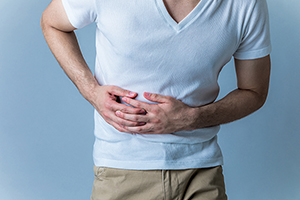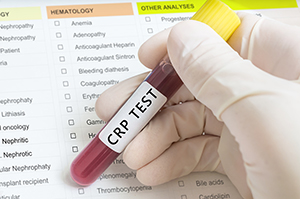



| By Dr. Ronald Hoffman

It was an evening flight from Las Vegas to New York City. Thirty years ago, I was returning from an integrative medicine conference, feeling exhausted and coming down with a cold. Suddenly the announcement came: “If there’s a physician on board, please identify yourself to a flight attendant”.
“Oh, no,” I thought, “This is the last thing I need, I just want to sleep. Am I the only doctor on the plane?” I briefly considered not answering, but then duty kicked in. I lit the call light above my seat.
A flight attendant came by, and informed me, without any particular urgency: “There’s a gentleman in first class who might need some attention. Would you care to follow me?”
What are the chances, I thought to myself, that some spoiled Vegas high-roller had rolled the dice on a booze-drug combination and needed me to nursemaid him through a bad reaction? Grouchily, I got up and followed the flight attendant.
But what I saw when we got to first class immediately jolted me into response mode. There was a man who was clutching his throat in distress, his face turning purple. Sure enough, I saw he wasn’t moving any air.
His seatmate handed me an empty packet of salad dressing and said: “The last thing he told me was that he was allergic to cow’s milk.” There, in tiny print, the label on the packet revealed “casein”—a milk protein—as an ingredient.
I quickly told the flight attendant that this was the inflight equivalent of a 911 on the ground and that 1) she needed to inform the pilot we should consider an emergency landing, and 2) to bring me a first aid kit STAT!
The kit she brought me was woefully inadequate. Instead of auto-injector epi-pens, it featured little glass vials of medication that you had to snap off and draw up the right dosage with a syringe. After some fumbling, I gave the man, now deep into anaphylaxis, a first shot of epinephrine.
Nothing. As the plane began its descent, and passengers craned their necks to watch the drama unfold, I didn’t wait the requisite 5 minutes to see if the medication was taking effect—I injected a second dose. Again nothing.
Give me your necktie, I told the man’s seatmate. I used it to tie off the man’s arm, filled up a syringe with IV Benadryl, and pushed the needle into his arm vein.
Presto! The man gasped and started taking regular breaths. He looked around, a little bewildered, and then we were landing. Instead of taxiing to a gate, an ambulance met us on the tarmac and EMTs burst onto the plane, but the man waved them off and said he was OK.
He profusely thanked me, and said he’d like to take me home in his limo, but I declined. I just wanted to go home and crash. Later the airline sent me a flight voucher for saving them from a multi-million dollar lawsuit—offering $70 for domestic travel.
Allergies to cow’s milk, and to a lesser extent, peanuts and shellfish, were found to boost Immunoglobulin E, setting off a damaging cascade that can target the endothelium, the arterial lining.
The insidious part is that these allergic reactions to foods are often sub-threshold—not engendering obvious symptoms like wheezing, nasal congestion, skin itch, vomiting or diarrhea.
So in the future, might we not envision adding a readily-available IgE food panel to usual tests like cholesterol, HDL, LDL, Hs-CRP, lp(a), ApoB, homocysteine, etc. to predict the risk of cardiovascular disease?
The spike may be due to a perfect storm of factors:
Sanitation: The “Hygiene Hypothesis” postulates that we evolved with hyper-vigilant immune defense systems, poised to counterattack germs and parasites. In fact, IgE specifically targets roundworms, ubiquitous in Third World countries, where food allergies are a rarity. Without the threat of external invaders, it is theorized, the immune system aberrantly goes after otherwise innocuous “prey”—like foreign-looking proteins from foods.
Western birth practices: C-sections and lack of breastfeeding give a poor start to the microbiome. Artificial formulas compound the problem by introducing unnatural food proteins before the immature immune system is able to tolerate them.
Timing of food introduction: When you introduce foods to infants and toddlers makes a difference. In a wrong-headed effort to reduce the incidence of food allergies, we once advised parents of toddlers to withhold potential triggers like nuts, fish and shellfish, dairy, wheat, and eggs. But that proved a mistake: early introduction of small amounts of a variety of foods usually conditions the child’s immune system to accept them.
Antibiotics: By disrupting the microbiome, and preempting the immune system’s natural response to pathogens, we distort immune responses.
Vaccinations: Similarly, although proponents of vaccines downplay it, vaccinating kids against every conceivable pathogen deprives the immune system of its necessary “boot-camp”. The alternative—allowing vulnerable children to sicken with or die of preventable infectious diseases—is even less palatable. In our quest for protection, we need to strike a balance.
Diet: The Western diet—with its plethora of ultra-processed food, additives, sugar, GMOs, pesticide and herbicide residues, and its lack of fiber, beneficial polyphenols, Omega 3 fatty acids and key vitamins and minerals—damages the microbiome and promotes inflammation. When leaks form in the gut wall, increased intestinal permeability (“leaky gut”) allows undigested food proteins to transit into the blood stream, triggering a reaction to what the immune system perceives as a foreign threat.
Pollution: Environmental chemicals add to the body’s toxic burden, and produce “allostatic load”—a term that connotes tipping the balance toward an immune system alarm state.
Detergents: A new theory about the origin of food allergies holds that we may acquire them, not by eating, but via skin contact. Tiny amounts of food proteins abound in the environment; kids crawl on dirty floors and smear foods on themselves. The body’s natural way to recognize and reconcile itself to novel foods is by processing their proteins in the GI tract. But when detergents strip away protective oils from skin surfaces, as with too much washing with disinfectant soaps, the skin becomes desiccated, and the tight junctions that form an impermeable barrier break down. The result is entry of intact food proteins through the skin.
Anybody recall scrubbing their hands raw amid Covid frenzy?
Imagine eating a peanut—no problem for most of us without severe peanut allergies. But that same peanut protein when injected into the blood stream would trigger a five-alarm fire; the immune system is overwhelmed with its foreignness and reacts, as if to a pathogen.
The latest research shows this can happen in the GI tract as well when dishwasher detergents and rinse aids damage the intestinal lining and cause leaky gut, allowing food allergens to traverse natural barriers intact.
Gradually increasing, after several months, he was once again able to tolerate shrimp—something that previously would have launched him into an anaphylactic reaction.
(NOTE: Don’t DIY this without supervised medical care from a board-certified allergist/immunologist!)
His self-treatment presaged a new breakthrough therapy for severe food allergies. Unlike treatments for airborne allergies to, say, pollen or cat dander, which are administered via shots, oral immunotherapy is delivered by mouth. It would have to be, because for reasons discussed above, the bloodstream is not happy with foreign food proteins injected via the skin.
“For example, a person allergic to peanuts may be given [orally] very small amounts of peanut protein that would not trigger a reaction. This small amount is gradually increased in the allergist’s office or a clinical research setting over a period of months. The goal of therapy is to raise the threshold that may trigger a reaction and provide the allergic individual protection against accidental ingestion of the allergen.”
While not billed as curative, some researchers believe that, with patience and under the correct protocols, food allergy sufferers may eventually be free to not worry about consuming small amounts of offending foods. For safety reasons, they’re still encouraged not to ditch their epi-pens.
Another innovative approach under exploration is the “peanut patch”. It’s an exception to the rule that food allergies must only be banished via oral tolerization. A patch is applied to the skin containing the equivalent of 1/1000th of a peanut—it’s virtually homeopathic. Unlike with oral immunotherapy, with epicutaneous immunotherapy (EPIT) the concentration is not gradually increased over time. After a year of wearing the patch, many children were able to eat three or four peanuts without reacting.
For now, these treatments remain investigational; as yet there are no FDA-approved peanut allergy treatments for children. But results of preliminary trials are encouraging, promising relief from life-threatening reactions to foods.
Though we think of declining estrogen as the hallmark of menopause, it's actually common for…

Up to 12 percent of Americans have ulcers at some point in life. Peptic ulcers…
Gallbladder disease is a modern illness. An estimated 20 million Americans have gallbladder disease. The…

There’s more to GI health than whether or not to take an acid-blocker. All too…

In the latest attempt to remove “stigma” from medical terminology, liver specialists have come up…

Q: My husband’s high sensitivity C-reactive protein (hs-CRP) is 1.62 and his homocysteine is 13.1. If…

Banish the Bloat: Leyla Weighs In with Tips and Insights

Our virtual voicemail is open 24/7, so there's no need to wait to submit your questions for Dr. Hoffman. Leave a message, and you may hear your question featured on the Intelligent Medicine radio program!